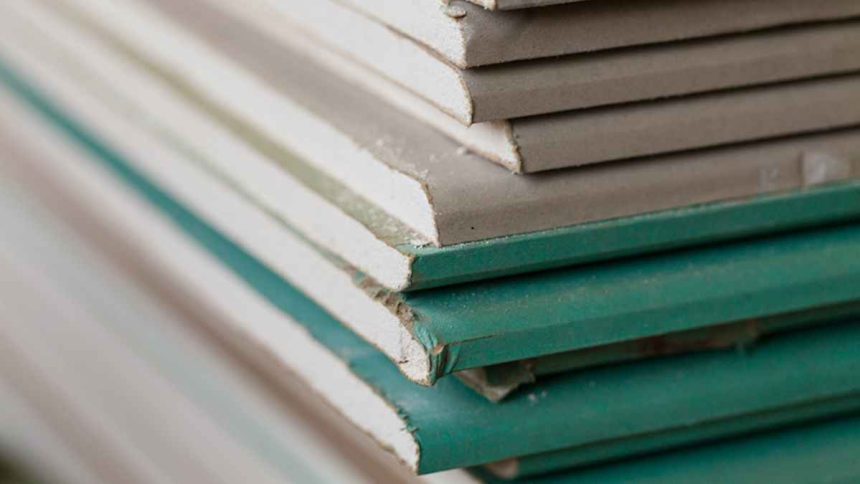When building new walls and ceilings, various materials are available to you. There are traditional brick and mortar walls or walls made from lath and plaster, wooden planks, plywood or veneer boards. Plasterboard is one of the most common materials used today.
Plasterboard is a drywall solution that tends to be quicker to install than alternative materials. It’s lightweight and if you know all about the different types, you can harness it to help ensure you meet regulations for fire, acoustic, moisture and thermal performance.
Here’s your essential guide to the main plasterboard varieties:
1. Standard plasterboard
The standard option is generally low-cost and an easy way to create wall partitions and ceilings. You can cut it to size to suit your own purposes. For domestic properties affected by fewer regulations, standard plasterboard may be appropriate. Luckily, it does still have some fire-resistant properties, albeit no replacement for fire-rated plasterboard.
2. Moisture-resistant plasterboard
If you’re working on a room that tends to have a lot of moisture, such as a bathroom or kitchen, moisture-resistant plasterboard is the one to go for. They repel moisture instead of absorbing it and will last longer in humid environments. It’s easy to paint or tile over this type of plasterboard and they’re not hard to spot in the shop either, as they are a distinctive green.
3. Fire-resistant plasterboard
These pink plasterboards are specially designed to burn slower than other types. It’s never a bad idea to install these in any part of a building, though some prefer to reserve them for areas that are more likely to catch fire, such as a loft or kitchen.
Any new floor must have a fire resistance of at least 30 minutes, so ceilings generally need plasterboards that are at least 12.5mm thick. In addition, separating walls are supposed to offer at least 60 minutes of fire resistance.
Using fire-rated plasterboard ensures that you will get the minimum 30-minute requirement. It comes in 12.5mm and 15mm thicknesses, with the 15mm thickness offering a higher amount of protection. To boost its level of resistance, you can even paint over it with intumescent fire-rated paint.
5. Acoustic plasterboard
Acoustic plasterboard is soundproof. Acoustic plasterboard is a wise choice for homes located in a noisy neighbourhood, especially if there is a train station or an airport nearby.
It’s also handy for those who need to control the sound within their own space, such as musicians with a music studio.
6. Impact-resistant plasterboard
This type is sturdier than average and less susceptible to wear and tear thanks to its high density. It can also be quite good at resisting mould and moisture. Commercial buildings are usually a very appropriate place for impact-resistant plasterboard, because they tend to have high footfall and therefore more risk of damage.
In general, plasterboard works well as part of a rigid insulation wall, where rigid insulation of at least 60mm thickness can be applied to the back of the plasterboard.
With the right plasterboard in each part of the building, you can optimise it to be better at resisting certain issues: fire resistance, moisture protection and sound protection are all qualities that you can look for when making a purchase.
Lynn Martelli is an editor at Readability. She received her MFA in Creative Writing from Antioch University and has worked as an editor for over 10 years. Lynn has edited a wide variety of books, including fiction, non-fiction, memoirs, and more. In her free time, Lynn enjoys reading, writing, and spending time with her family and friends.















